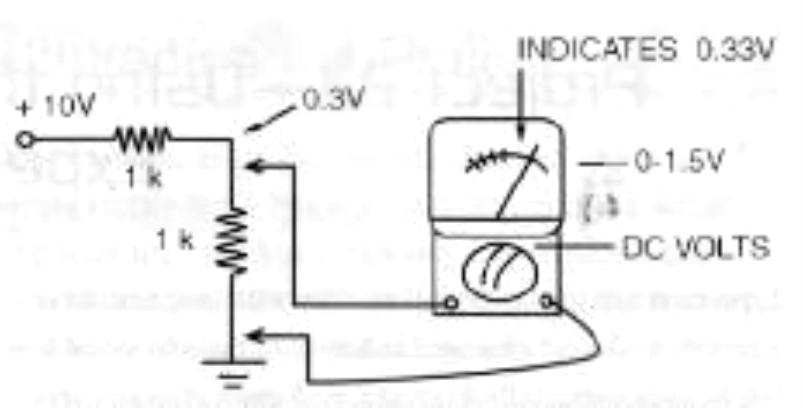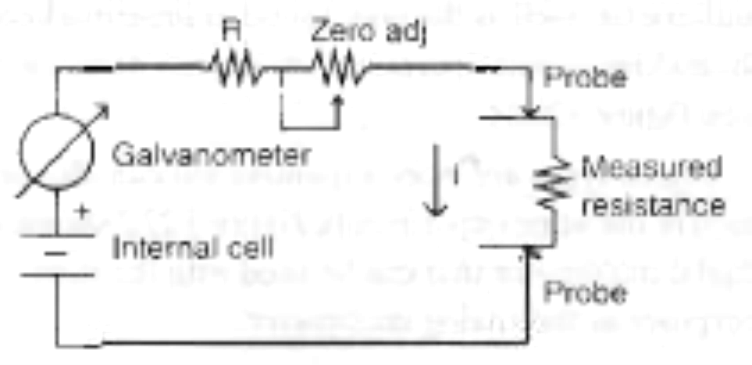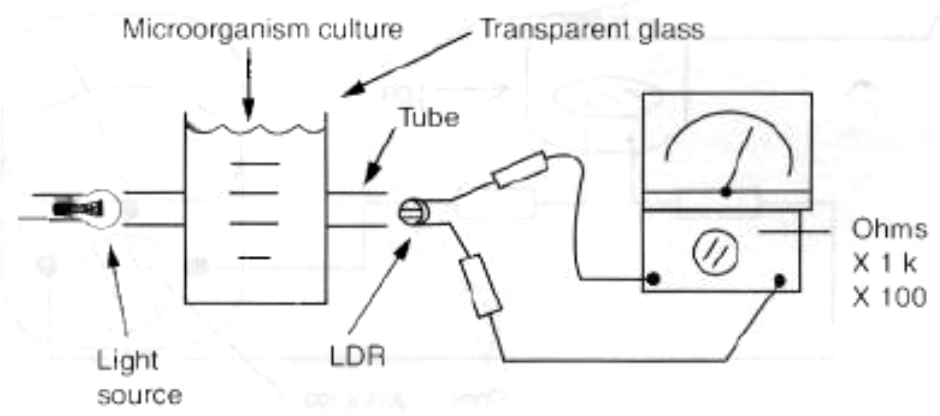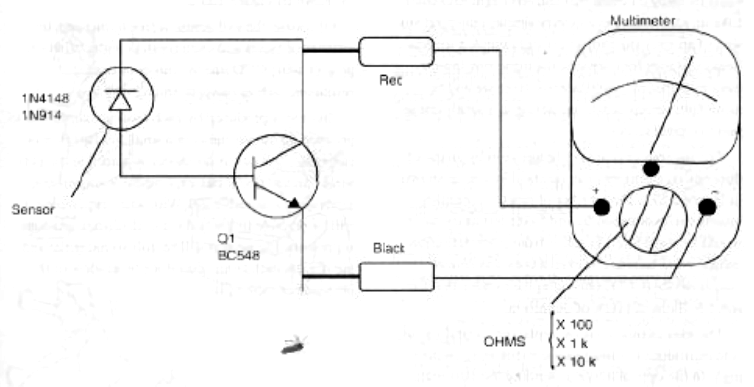Note: This article was originally written in Portuguese for the author's website in 2004, and later (2006) used in the book Bionics for The Evil Genius. Some changes to the original text were introduced.
This chapter describes a series of applications and experiments where a common multimeter can be used to detect the biologic activity of living beings. The reader can use this multimeter to monitor changes in the environment, using the creature as a living sensor. Other applications include studies on the behavior of many creatures, and even stress or other states of mind in the lives of humans.
The important point to arise in this chapter is that even a very low cost multimeter can be used in many interesting applications without any need for hard-to-find or expensive additional parts.
The Project
Many biologic activities include electric changes. Resistance changes, the generation of electric potential, or even the production of electric signals or cur-rent, such as in the case of electric fish, are examples of these changes. Some of those changes are also strong enough to be detected by even a common multimeter, such as the ones found in supermarkets for making general-purpose tests in your home or car (see Figure 1).
Digital types are more expensive but can also be used in the same experiments. Figure 2 shows a digital multimeter that can be used with the same purposes as the analog multimeter.
Using any of these multimeters, we can detect small changes of resistance in living systems or the generation of low voltages. Low voltages starting from a fraction of a volt and resistances with a large range of values can be measured using these multimeters.
The sensitivity of low-cost multimeters can also be increased with a few external components, such as transistors that act as amplifiers. The other possibility, explored here, is adding a sensor to the multimeter to interface both of them with the biologic system being studied. Light-dependent resistors (LDRs), transistors, and pressure sensors can be connected to the multimeter, acting as transducers. They can convert other physical magnitudes such as light, color, temperature, or pressure into electricity measured by the multimeters.
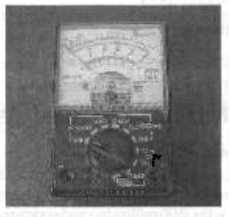
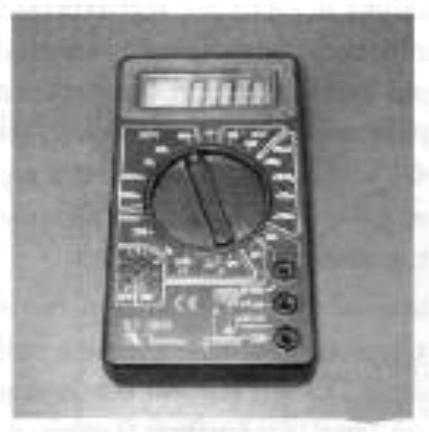
It is also possible to add some electronic circuits for converting magnitudes and increasing the sensitivity in order to detect other biological phenomenon. Operational amplifiers and even transistors can perform these tasks, as described in the next section.
Bionic Experiments
Using the multimeter and some accessories as the electronic part of the project, the biologic part can be any living being or biologic system:
• Bioactivity of microorganisms
• Sensing the presence of life
• Heartbeat observation
• Breath detector
• Temperature sensor
The Multimeter and Its Characteristics
Common analog multimeters can detect voltages of up to 0.1 volts (100 millivolts) and resistances with a large range of values. Multimeters with sensitivities of 5,0(X) or 10,000 ohms per volt are also available but are more expensive.
The sensitivity in ohms per volt expresses the amount of resistance introduced by the multimeter when plugged into a specimen. For instance, when using a multimeter with a sensitivity of 1 ((X) ohms per volt in the scale of 1 to 1.5 volts, this represents a resistance of 1,5(X) ohms in parallel with the measured circuit, as shown in Figure 3.22.3.
This resistance drains current from the circuit, causing a voltage drop or change in the real voltage to be measured. The less current that is drained, the better the multimeter is because the less of a change it causes in the voltage to be measured.
Since biologic currents are very low, representing sources with high internal resistances, the presence of a common multimeter normally will change the real voltages being measured. This is because, as high as the sensitivity of the multimeter is, it is better for bio-logic experiments. However, these limitations don't prevent the use of low-cost multimeters in many different experiments. This chapter will explain how to increase the sensitivity and how to use it in experiments or applications where low sensitivity is not a limitation.
Another point to observe is that, besides the voltage scales of the multimeter, we can also measure resistances. The changes in the resistance of a specimen can reveal many things about it. To measure resistances, the multimeter applies a voltage and measures the current flow across it, as Figure 4 shows.
In this case, the sensitivity of the multimeter is highest, and the current flowing across the specimen is lowest. Low currents are highly desirable because they don't cause changes in the biological subject.
What happens is that when a current flows in a living being, within the cells of a specimen, it causes galvanic effects or chemical reactions that change the specimen. The result is that, if the current is applied for long time intervals, the specimen can die.
Also, digital multimeters are much more sensitive than analog multimeters. Digital multimeters have a very high input impedance (22 MIA meaning that they introduce a very low change or none in the circuit being analyzed. Analog multimeters also are unable to detect fast changes in currents or voltages due to the fact that the sample rate used to acquire data in the analog form is not fast enough. This means that some experiments described in this chapter can't be performed with analog multimeters.
Generally speaking, digital meters have high impedance and introduce low changes in the measured voltage; analog multimeters are low-impedance devices, and introduce changes in the voltage to be measured.
The Projects
Most of the following projects use low-cost multimeters. In some cases (as indicated in the project), more sensitive multimeters are recommended, as well as digital multimeters.
The accuracy of the project or experiment depends on several factors besides the multimeter, such as the biological specimen, the skills of the reader, and local and unpredictable conditions. Although the author is careful to point out when harmful materials and substances are used. be sure to prevent contact with one's skin and eyes when using these materials.
Bioactivity of Microorganisms
Changes in the transparency of a culture of microorganisms can be detected easily using a multimeter and an LDR, as shown by Figure 5.
This principle was used in one of the first Mars expeditions. Food for microorganisms was placed in a liquid. If life exists on Mars, the microorganisms would eat and reproduce in the liquid, changing its transparency. A sensor and a light source were used to measure these changes and send the information back to Earth.
The multimeter for this experiment will be adjusted to a resistance scale according to the level of light used. The evil genius must experiment to find the best light scale to be used.
Other experiments involving changes in transparency and color can be made using the same configuration. Light filters and polarizers can also be used to perform experiments involving organic substances associated with biologic activity.
Heartbeat Observation
The LDR and a light source placed as shown in Figure 122.6 can monitor a heartbeat.
The heart acts as a pump, forcing the blood to flow across the circulatory system. A process that produces waves of blood, propagating through the vessels and changing the transparency of the parts of the vessels where the pressure is high, makes its action.
So by using a light source and a light sensor, as shown in the figure, small changes in the transparency due to the blood waves can be detected. Small oscillations picked up by a multimeter will indicate which waves are associated with the heartbeat. The project is critical because no external light can interfere with the sensor and the ideal scale must be experimented with according to the light source.
Breath Detector
When the air enters our lungs, it is cold, but when we expel this air it is warm. We can detect a Orson's breath by the difference of temperature between the air that enters and the air expelled.
The sensor is a common diode that has an inverse resistance that depends on the temperature. Since the current is too weak to be measured by the multimeter, the sensor made by a diode must have a transistor for amplification purposes.
The complete circuit for a hot air detector is shown in Figure 7. The scale is the highest for the multimeter (ohms x 1 k or ohms x 10 k).
Testing and using it is very easy; just breathe on the sensor. The multimeter will indicate a fast fall in the resistance. After waiting a few seconds, the resistance will rise again because the sensor is now returning to the original temperature.
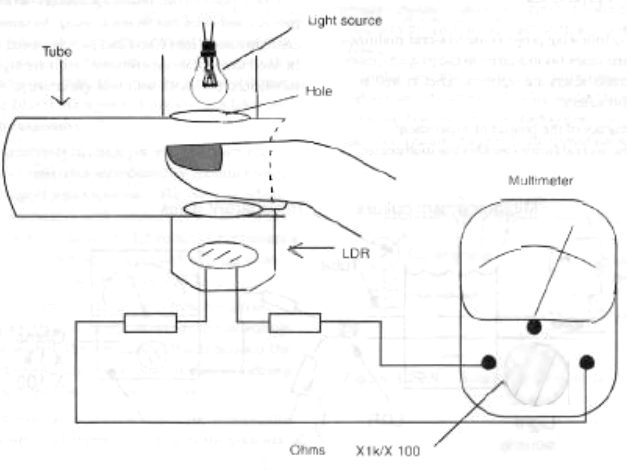
As a temperature sensor, the device can be used to detect bioactivity. Fermentation, the decomposition of organic matter, and other phenomena associated with biological activities normally are accompanied by changes in temperature. The multimeter with a temperature sensor, such as the one described here, can be used to monitor such changes.
An important fact to be considered when using the multimeter is that the sensor can be placed far from the indicator. The multimeter can be wired to the sensor by cables up to 100 meters long.
However, digital multimeters are not suitable for some of the experiments described here because they do not use a power supply with enough current to power the sensors. Their impedance is very high and in some cases the changes in the measured magnitudes are not detected as fast as we need for the application.

